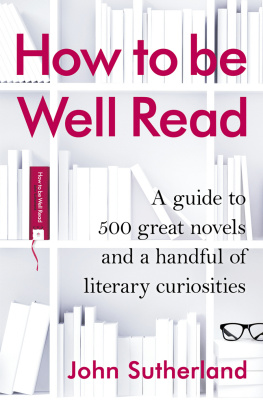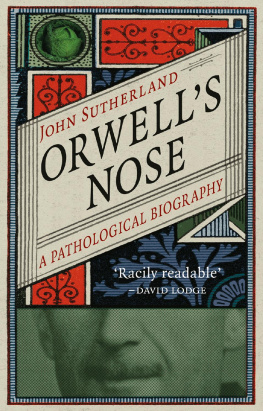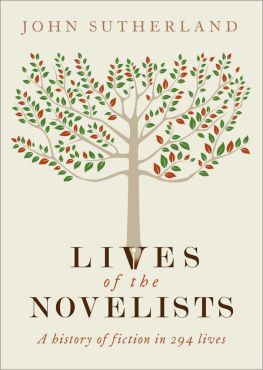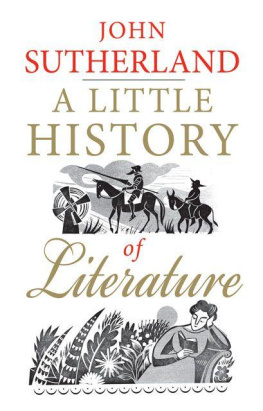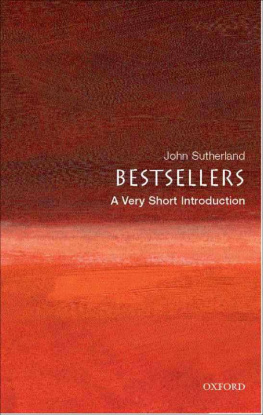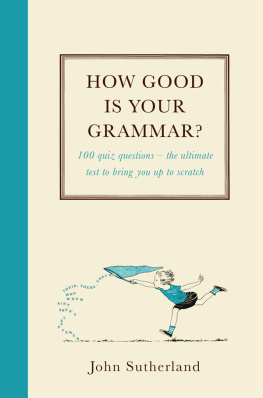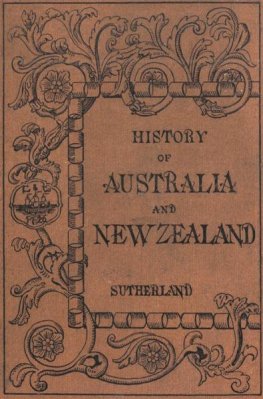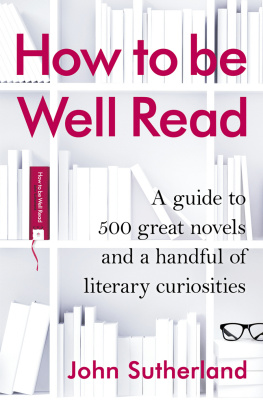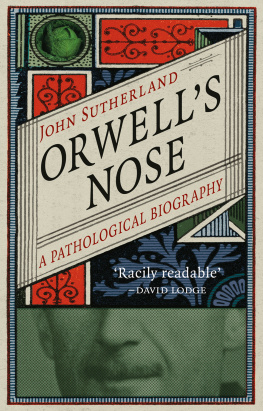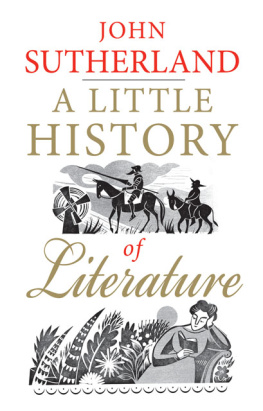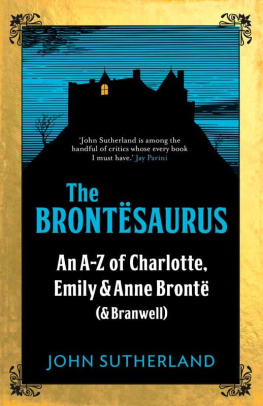Contents
About the Book
As the annual flood of published novels grows ever greater, its a hard a job to keep up, let alone sort the wheat from the chaff. Fortunately, literary sleuth and academic John Sutherland is on hand to do precisely that. In the course of over 500 wittily informative pieces he gives us his own very personal take on the most rewarding, most remarkable and, on occasion, most shamelessly enjoyable works of fiction ever written the perfect reading list for the would-be literary expert.
His taste is impressively eclectic. An appreciation of Apuleiuss The Golden Ass arguably the first-ever novel is followed by a consideration of Ian Flemings Goldfinger. The Handmaids Tale is followed by Hangover Square, Jane Eyre by Jaws. There are imposing Victorian novels, entertaining contemporary thrillers and everything in between, from dystopian works to romance.
The flavour of each is brilliantly evoked and its relative merits or demerits assessed. At the same time, John Sutherland shows how the work fits into a broader context whether that of the authors life or of other books from the same genre or period. And he offers endless snippets of intriguing information: did you know, for example, that the Nazis banned Bambi or that William Faulkner wrote As I Lay Dying on an upturned wheelbarrow; that Voltaire completed Candide in three days, or that Anna Sewell was paid 20 for Black Beauty?
Encyclopedic and entertaining by turns, this is a wonderful dip-in book, whose opinions will inform and on occasion, no doubt, infuriate. It is also effectively a history of the novel in 500 or so bite-sized pieces.
About the Author
John Sutherland has been a professor of literature for a long time and in many places. Currently he teaches at the California Institute of Technology and is the emeritus Lord Northcliffe Professor at UCL.
He is the author of numerous books, including the puzzle-collection Is Heathcliff a Murderer? (probably, yes) and the encyclopedic Longman Companion to Victorian Fiction. In recent years he has written voluminously on a variety of literary and non-literary topics in, principally, the Guardian and the Financial Times.
How to Be Well Read
A Guide to 500 Great Novels and a Handful of Literary Curiosities
John Sutherland

Preface
During the half-century Ive worked in the university sector the study of my subject, English Literature, has changed radically. It has, nowadays, a more technical tool-kit than it used to theory has raised the professional game. Its cleverer. Bellelettrism, appreciation and self-sufficient close reading are no longer approved.
At the same time the focus of critical attention has narrowed to laser-like intensity. The monograph (literally writing about one thing) is the principal medium of critical exchange. Generalism and big pictures are no longer the norm.
I approve of what has happened in English studies: the new seriousness, one could call it. A couple of things I regret, however. The first is the relegation of the common reader with whom, unlike Dr Johnson, the academic critic no longer always rejoices to concur. The second is the above mentioned narrowing of vision. To be well read nowadays is not the unqualified term of praise it once was.
In my opinion, literature is a library, not a curriculum or a canon (I would not go quite as far as Umberto Eco, and claim that God, if he exists, is a library, but Im half way there). In three large books, of which this is last, I have tried to sketch out larger than usual maps.
The Longman Companion to Victorian Fiction (1989, second edition 2008) contains some 650 lives and close on a thousand narrative summaries, together with ancillary entries on publishers, forms of publication, movements. The Lives of the Novelists: a History of Fiction in 294 Lives (2011) is what the title (which annoyed some reviewers) states it to be. In brief these ventures are an attempt to think big, and companionably. In keeping with its predecessors this book is not a guide, a reference book, or a best of compilation. It is a companion.
In the 500 or so entries which make up this book I have not, except in a handful of instances, recycled material from the Victorian companion. Nor have I, in a number of cases, included entries on novels on which I have written extensively elsewhere or for which, alas, I have no feeling worth putting on paper. I have, however, done my best to give a sense of the many different zones and genres of fiction, and the rewards.
Thomas Gray once jested that if heaven existed it would be a comfortable sofa and an endless supply of new novels. If so, my life has been a foretaste of heaven. Although I have been paid, one way or another, to read novels all my life (and am now pensioned to do so) I do not regard myself as well read in the genre. I do not think, given the number stored dustily in the British Library vaults (is it two million?) anyone can be. But one can be better read more fish in ones net, on lifes long reading trawl. The intention in what follows is to share a lifelong enthusiasm for that wonderful human invention, the prose novel. And, most importantly, to register the many different kinds of pleasure the prose novel can give.
I am very grateful to Nigel Wilcockson, Imogen Lowe, and Gemma Wain for their assistance, encouragement, and guidance. I exonerate them entirely from any errors that may be found in what follows.
John Sutherland
London, February 2014
Aarons Rod, D. H. Lawrence,1922
Aarons Rod is a novel fated, like aardvark in dictionaries, always to come first in any alphabetised collection. Rarely, however, is it the first novel reached for by Lawrentians. It was conceived in 1917, the bleakest year of the war. Lawrence had eloped with a married German woman (whom he persuaded to abandon her children) to set up a commune in Cornwall. The move culminated in his trying to throttle his fellow communard, John Middleton Murry an event immortalised in the genital-dangling wrestling scene in the Ken Russell film of Lawrences Women in Love. Ranamin (as the utopian community was called dont ask why, its complicated) led, by a series of misadventures involving semaphoric underwear on washing lines, drawn curtains, blackout violations, and submarines, to the Lawrences being persecuted as German spies. It was a bad time for a suspected conchie to be married to a woman called Frieda von Richthofen a distant relative of the fabled Red Baron flying ace.
Aarons Rod was finally published in 1922 at the period in his life when Lawrence had resolved to shake the dust of England (coal dust, specifically) off his shoes for ever. The narrative opens crisply in the authors, and the heros, mining country:
There was a large, brilliant evening star in the early twilight, and underfoot the earth was half frozen. It was Christmas Eve. Also the War was over, and there was a sense of relief that was almost a new menace.
Aaron Sisson, a collier checkweightman, ups and leaves, with nothing but his flute and piccolo, to become a musician. He deserts his wife and daughters. His reasons are, literally, obscure. These harmless female impedimenta elicit a dark rage in his soul. He craves light. In floodlit London, Aaron finds employment as a flautist in metropolitan opera. It is as likely an event, in the real world, as banjoist George Formby leading the London Philharmonic. Aarons new career is interrupted by a bout of Spanish flu (an epidemic which killed more Englishmen than the Kaiser). His recovery marks his rebirth. Aaron moves, sardonically, among the chattering Bloomsbury intelligentsia, whom he finds unsatisfactory, before drifting on to Florence, the city of renaissances, where he finds living with a Marchesa similarly
Next page
